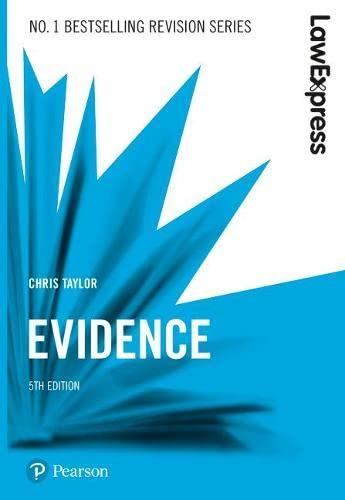Question
Using the IRAC structure and the rule below , Using the IRAC structure, explain whether you can recruit CNAs and non-CNAs based on the clients'
Using the IRAC structure and the rule below , Using the IRAC structure, explain whether you can recruit CNAs and non-CNAs based on the clients' preferences and, if so, how that could be justified based on employment discrimination laws. Be sure to include the justification for hiring based on the preferences, the problems with hiring based on client preferences, and how you would handle this situation.
SCENARIO: EMPLOYMENT DISCRIMINATION
You were recently hired as a recruiter in the Human Resources Department of Home Care Senior Care, Inc. in the Bronx, New York. As a recruiter, you are responsible for posting advertisements, receiving resumes, interviewing applicants, and making hiring decisions. The company provides in-home care certified nursing assistants (CNAs) and non-CNAs as service providers to seniors and physically challenged clients who need assistance in the home. The certified nursing assistants provide physical care, such as bathing, dressing, feeding, transfer from bed to wheelchair or walker, etc. The non-certified nursing assistants provide housekeeping services such as meal preparation, cleaning, washing, etc. Home Care tells potential clients that it will match them with a service provider based on their needs and preferences. Your supervisor has explained that appropriately matching clients and service providers is a significant business objective to insure successful performance on the job.
The clients complete an intake form that explains their medical condition and the type of services needed. It also asks whether there is any preference for a CNA or non-CNA, based on gender, race, national origin, color and religion. Your supervisor has explained that since the clients are in a vulnerable position, the company strives to match a CNA or non-CNA as closely as possible to the client's preferences. There are some clients, such as those that are white, who are not comfortable having a black or brown person in their home. The majority of the clients are female and some are not comfortable with a male person caring for them physically or being in their home. Other clients are not comfortable if a CNA or non-CNA speaks a language they do not understand. And, some clients are very religious and would like to be cared for by someone with whom they can discuss religious beliefs. The recruitment process is on-going since the company regularly takes on new clients .
Also, there is a large turnover in the CNAs and non-CNAs which requires screening, interviewing, and hiring on a regular basis. Your supervisor has instructed you to review the client intake forms and to hire CNAs and non-CNAs taking the client's preferences into account. In reviewing the client preference forms, you have found that the majority have completed the form indicating a preference for white, English speaking, female CNAs and non-CNAs. They also indicate a preference for Christian or Jewish CNAs and non-CNAs. There are several Jewish clients who have a kosher household and therefore prefer someone Jewish who knows how to maintain a kosher kitchen. There are also several white clients who have become violent when a black or brown person was sent to work in the home and on two occasions in the past year, the employees were physically assaulted by a client because of their race.
Rule: 8-107. Unlawful discriminatory practices.17
.Disparate impact.
.An unlawful discriminatory practice based upon disparate impact is established when:(1)The commission or a person who may bring anaction...demonstrates that a policy or practice of a covered entity or a group of policies or practices of a covered entity results in a disparate impact to the detriment of any group protected by the provisions of this chapter; and(2)The covered entity fails to plead and prove as an affirmative defense that each such policy or practice bears a significant relationship to a significant business objective of the covered entity or does not contribute to the disparate impact;...provided further, that a policy or practice or group of policies or practices demonstrated to result in a disparate impact shall be unlawful where the commission or such person who may bring an action produces substantial evidence that an alternative policy or practice with less disparate impact is available to the covered entity and the covered entity fails to prove that such alternative policy or practice would not serve the covered entity as well. "Significant business objective" shall include, but not be limited to, successful performance of the job.
Step by Step Solution
There are 3 Steps involved in it
Step: 1

Get Instant Access to Expert-Tailored Solutions
See step-by-step solutions with expert insights and AI powered tools for academic success
Step: 2

Step: 3

Ace Your Homework with AI
Get the answers you need in no time with our AI-driven, step-by-step assistance
Get Started


